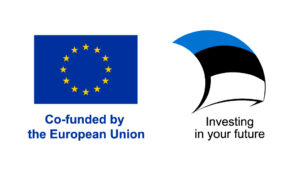Real Projects - Tangible Impact
Projects that demonstrate how we support international growth, market entry, and investor readiness across key global regions
Overview
Strategy to increase Estonian export to and investments from India
📥 Download the Full Report
Click here to download the full PDF
In 2024, GlobeGrow Consulting, in collaboration with Norwegian and Indian partners, undertook a landmark project commissioned by the Estonian Ministry of Foreign Affairs (MFA). The project aimed to design a comprehensive five-year strategy to enhance Estonian exports to India and attract Indian foreign direct investments (FDI) to Estonia. This initiative aligns with Estonia’s broader goals of fostering international trade relationships and leveraging global economic opportunities.

Project Objectives
Expand Estonian Exports to India:
Identify key sectors with the highest export potential and provide Estonian businesses with actionable insights for entering and succeeding in the Indian market.Attract Indian Investments to Estonia:
Showcase Estonia’s strengths as an investment destination to Indian companies, emphasizing opportunities in technology, green energy, and digital solutions.
Key Activities
Market Analysis:
Detailed research into India’s economic landscape, focusing on high-growth sectors like ICT, CleanTech, HealthTech, timber, and food and beverages.Sectoral Strategy Development:
Creation of sector-specific roadmaps, including opportunities, challenges, and tailored recommendations for both Estonian exporters and Indian investors.Cultural Insights and Practical Guidelines:
Development of tools and guides for Estonian businesses to navigate Indian business culture, including communication styles, trading traditions, and legal requirements.Stakeholder Engagement:
Establishment of connections between Estonian and Indian businesses through targeted B2B events, trade missions, and industry partnerships.
Deliverables
Published “India Market Overview” in website of Ministry of Foreign Affairs vm.ee/en/export-india:
- An overview of market opportunities and challenges.
- Export strategies for Estonian businesses.
- FDI attraction plans tailored for Indian investors.
Five-Year Tactical Plan:
A roadmap with measurable milestones, communication strategies, and actionable steps to achieve export and investment goals.Guidelines for Businesses:
Practical tips on market entry, cultural considerations, and leveraging incentives for mutual benefit.
Impact
This project equips Estonian businesses with the tools and strategies needed to navigate the dynamic Indian market, while positioning Estonia as a prime destination for Indian investments. The initiative serves as a blueprint for fostering sustainable and mutually beneficial economic relations between Estonia and India.
Here is final report and summaries of strategies.
📥 Download the Full Report
Click here to download the full PDF
